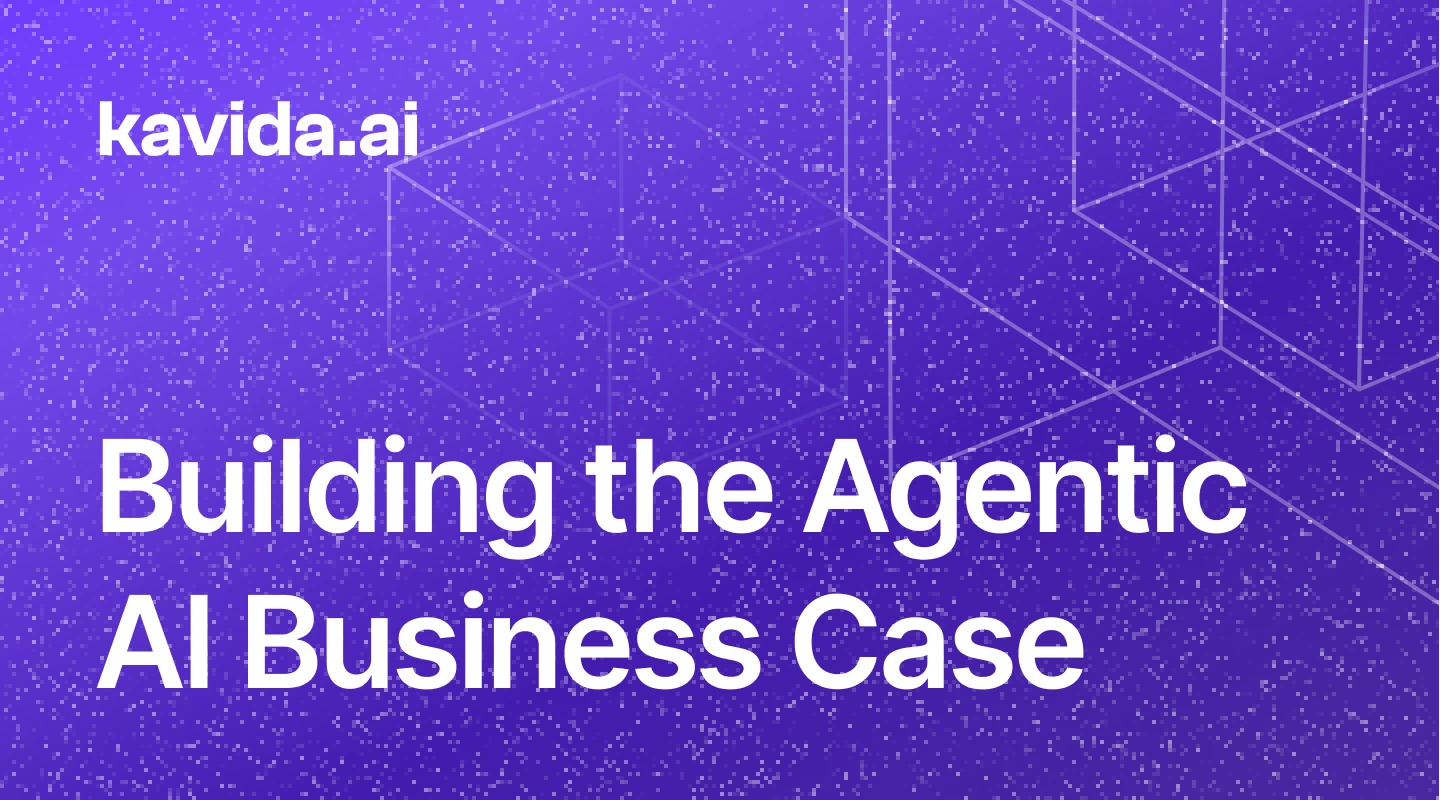
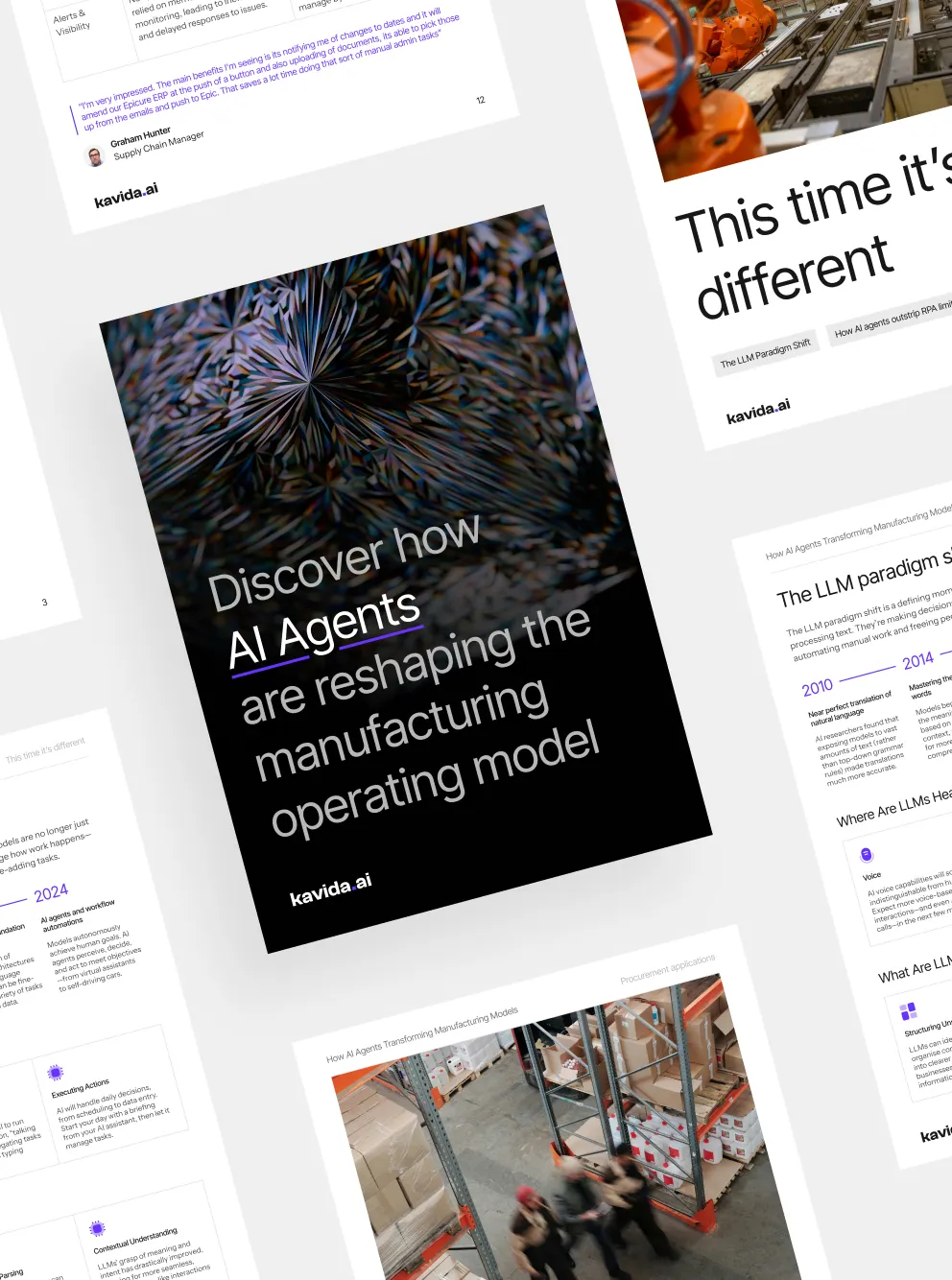
Discover how AI agents are reshaping the manufacturing operating model

Hi, I’m Alison!
Share your details, and I’ll give you a call in minutes to see how we can assist.

The Agentic Transformation in Manufacturing: From Specialised AI Assistants to Intelligent Systems
Table of Contents
ToggleMany manufacturers are considering AI adoption, but the real challenge is where to begin. The idea of “intelligent AI agents” may sound futuristic or high-risk, but it doesn’t have to be. The agentic AI journey is designed to be phased, low-risk, and high-reward.
It starts with solving one operational bottleneck. Then another. Over time, these AI agents can evolve into a fully connected ecosystem—automating, adapting, and even collaborating in ways that transform how work gets done.
In this article, we’ll walk through that journey: what each stage looks like, where the ROI comes in, and how manufacturers can start small and scale confidently. Whether you’re just exploring or already experimenting, this guide is your blueprint for building leaner, smarter teams with agentic workflows, and understanding what the future operating model will eventually look like.
Deconstructing the "Agent" in Agentic AI
At its core, an AI agent is a software entity that senses its environment, makes decisions, and takes action to achieve specific goals. Agents perceive their environment through data inputs, make decisions using models or rules, and act by executing tasks—often via APIs. Think of them like a Roomba or smart thermostat: reading their surroundings and adjusting in real-time
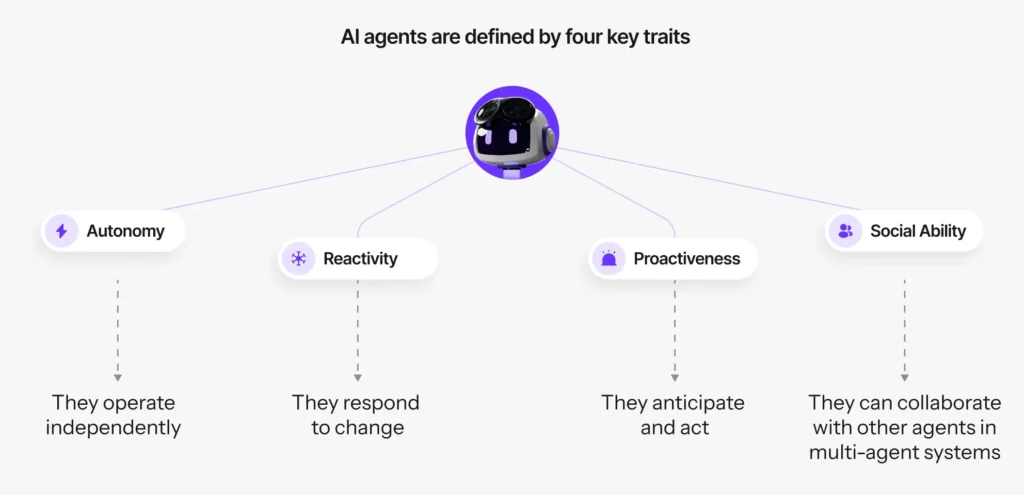
These agents can be customised to handle tasks of varying complexity within the manufacturing space. They essentially act as digital workers that support your existing teams to work smarter and faster.
The Agentic Journey
Most manufacturers begin by deploying a low risk but high impact single-purpose agent that automates a specific task, like tracking supplier risk or managing order updates. From there, it’s easy to scale into multi-agent workflows, where several agents work across warehousing to finance.
Let’s break down the typical agentic journey:
The Single-Purpose Agent (The Specialist)
Your single purpose agent is a laser focused specialist. Procurement is prime for automation and agentic AI, so for this section we’re going to look at a single purpose agent built for this function.
The first step is to identify a procurement workflow that could benefit from agentic AI to deploy your agent and get it started on its work. For example, your procurement team is currently bogged down with hundreds of emails each day, and doesn’t have time to monitor supplier risk. Your AI agent can be deployed to stay on top of any risk to your active suppliers and send you an alert once it picks something up. Once you build up confidence in the technology, you can assign your agent other tasks that take up time and eat into your bottom line.
Let’s take a look at some other use cases of a single purpose agent for procurement:
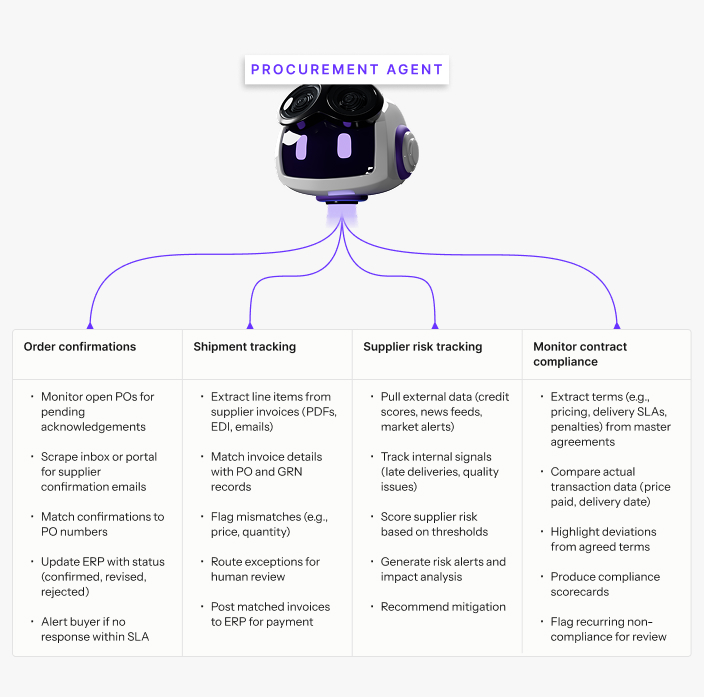
This agent is your first step in the agentic journey—simple, effective, and easy to scale.
Multi-Single Purpose Agents
As organisations broaden their use of agentic AI, the next natural evolution is to expand to other functions. These are dedicated agents working across logistics, warehousing, production, and more, expanding the benefits of automation and agentic AI across the board.
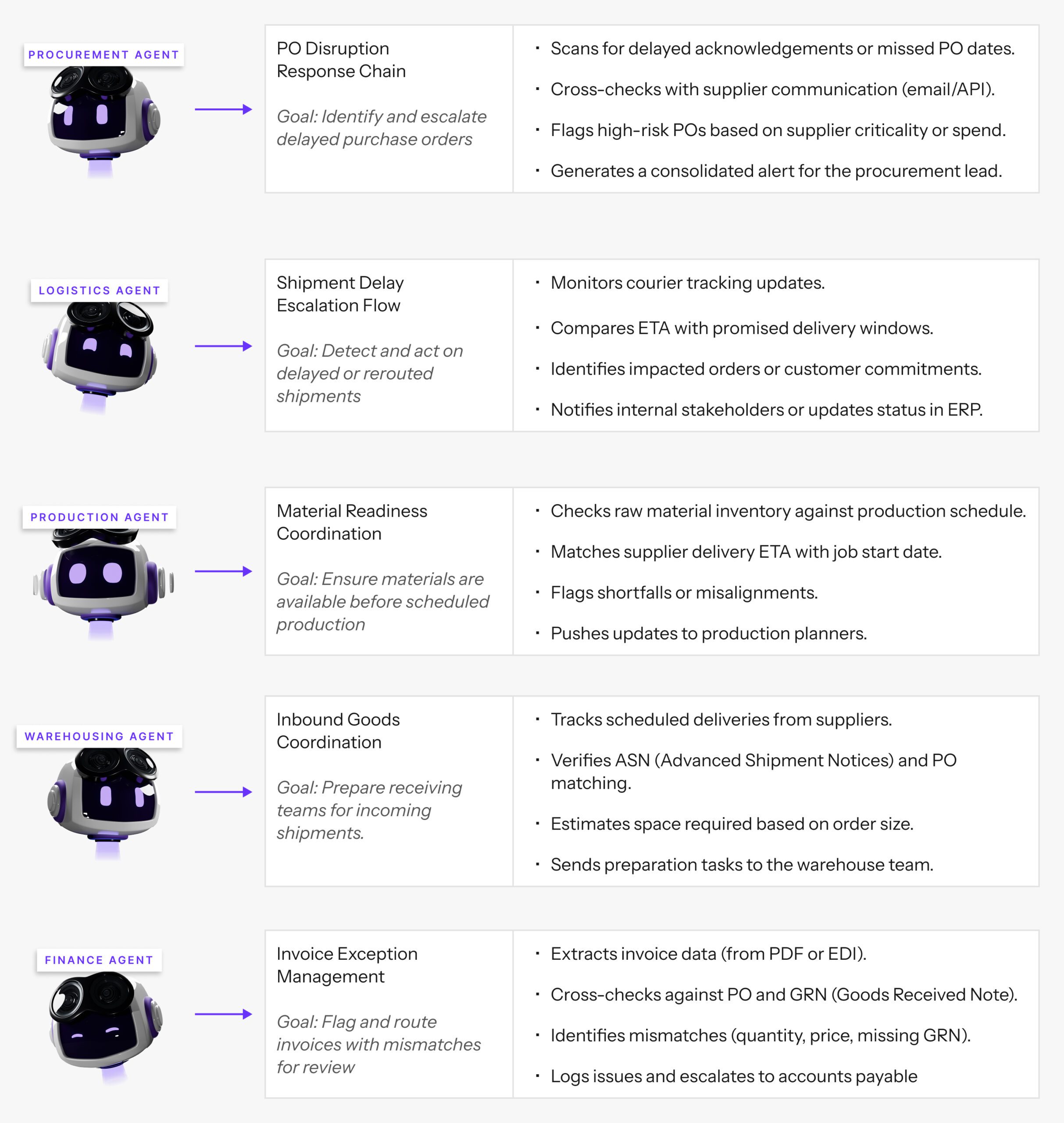
Multi-Agent Systems (MAS) (The Collaborative Team)
Multi-Agent Systems (MAS) are the most advanced form of agentic AI and the next big shift in enterprise tech. Here, agents communicate and collaborate with each other to solve complex problems.
For better context, let’s look at how agents would work together in an end-to-end workflow for an aerospace manufacturer:
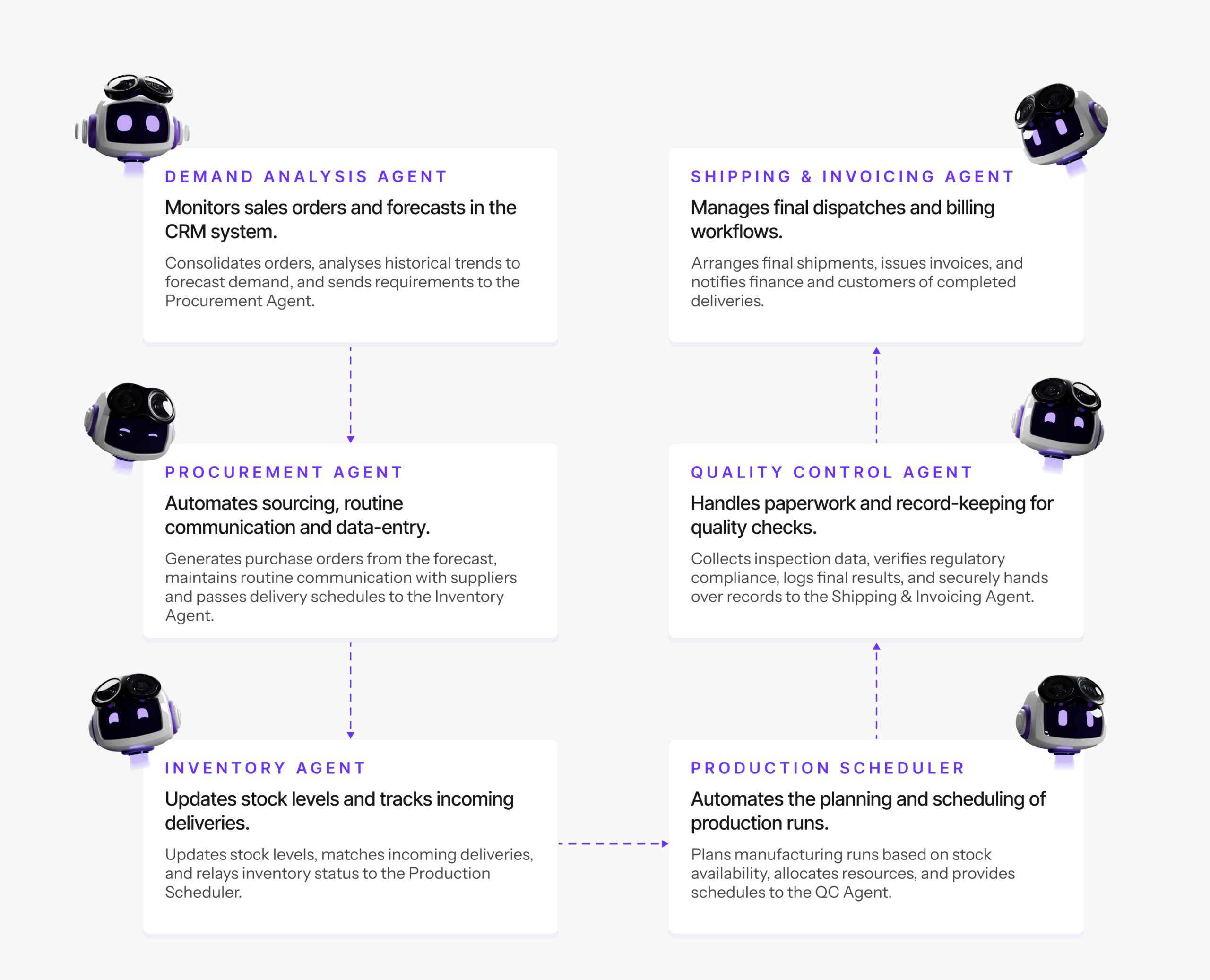
The Role of LLMs in Agentic AI
You’ve likely heard of the term large language models (LLMs)—AI systems trained on vast amounts of text that can understand and generate human-like language. Tools like ChatGPT are built on this foundation. But in the world of agentic AI, LLMs play a much bigger role than just chatting—they become the “brains” of your AI agents.
Significant breakthroughs in technology over the past few years have made it possible to build LLMs that don’t just process text, but reason, summarise, classify, and generate new content in real time. These models can understand context, track meaning, and connect information across large, complex and messy datasets.
LLMs now power AI agents that can:
- Read and understand supplier emails
- Extract critical information from invoices, contracts, or packing lists
- Analyse real-world events for proactive alerts and risk mitigation strategies
- Communicate with other agents and systems
Take autonomous action to support business outcomes
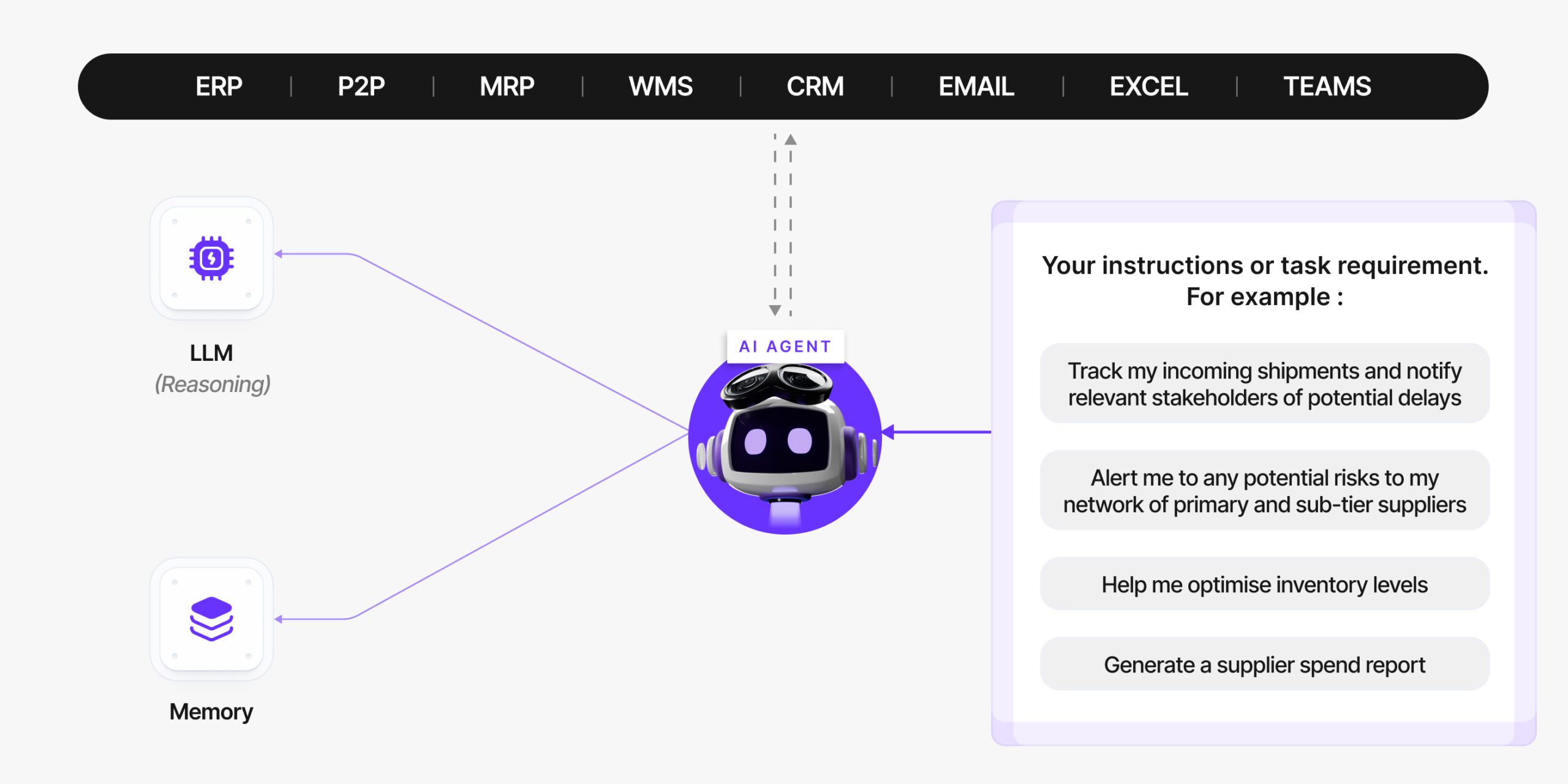
Navigating the Challenges of Agentic AI
Agentic AI holds immense promise but here’s what manufacturing leaders need to navigate when taking their teams on this transformation journey:
- It gets complex, and fast — Designing and scaling agent-based systems isn’t plug-and-play. When businesses grow in size and complexity, the need for a reliable and centralised platform for data control becomes essential. An agentic AI can connect the dots, bridging your company’s internal processes to create a streamlined workflow for fast and reliable outputs. The key is to map out your internal processes and bottlenecks to understand where exactly an AI agent can have the most impact, and set clear guidelines on what the AI is meant to handle and where human oversight is needed.
- Bad data leads to bad decisions — Agentic systems thrive on accurate information. If data quality is off, actions taken can be misinformed. A thorough data audit is required before investing in any new tool.
- Resistance to change — If you wait until the technology contract is signed, you’ve already missed the moment. Change management is critical and starting at the outset can enable cross-functional leaders, executive sponsors, and teams to align on goals and keep up the momentum.
- Security and ethics matter — The right tech vendor can ensure transparency across the board, ensuring security and privacy concerns are managed and addressed effectively.
Getting ahead of these challenges isn’t just risk mitigation—it’s how tomorrow’s leaders are made. The good news? When designed with intention, agentic AI doesn’t just overcome complexity—it delivers measurable business value.
Why This Matters for Your Business
In a transformation-driven era, the ability to act intelligently and autonomously at scale is now essential. Why? Knowing where agentic AI drives real value is what separates those experimenting with automation from those leveraging intelligence for bottom-line impact.
From automation to autonomy
The shift underway in procurement isn’t just about automation—it’s about autonomy. We’re moving beyond tools that complete predefined tasks, towards systems that understand context, make decisions, and act independently within set parameters. And when done right, that unlocks an entirely new level of performance.
Hyper-optimisation across complexity
Agentic AI enables hyper-optimisation across complex supply chains. Instead of your team chasing reactive fixes, agents can continuously scan thousands of variables—supplier status, lead times, logistics options—and surface the smartest, most cost-effective course of action.
Proactive resilience by design
It also means building proactive resilience into your operations. Kavida’s approach doesn’t wait for disruptions to show up. Agent PO flags potential risks early and even recommends mitigation paths, ensuring teams stay one step ahead of delays and shortages.
Human teams stay focused on what matters
And when AI agents take care of the heavy lifting—invoice chasing, shipment tracking, supplier nudging—your team has the headspace to focus on strategic work: relationship building, innovation, and long-term planning.
The Future is Increasingly Agentic
Manufacturers are shifting from tools that support decisions to systems that make them. We’re entering an era of smart, responsive operations, and manufacturers that invest in the right infrastructure for their teams will far outcompete the rest.
The challenges facing procurement, and manufacturing, today—volatility, complexity, disruption—won’t be solved with traditional playbooks. Agentic AI offers a new paradigm: one that delivers autonomy, optimisation, and proactive resilience.
At Kavida, we’re building AI agents that go beyond just dashboards and unlock intelligent action. If you’re ready to explore what your agentic journey looks like, we’re ready to help.
The Agentic Transformation in Manufacturing: From Specialised AI Assistants to Intelligent Systems
Table of Contents
Toggle
Author:

Deana Claessen
Community Manager, Kavida.ai
Deana manages our community efforts and creation of thought leadership material, connecting a community of exceptional supply chain and procurement professionals, as well as forward-thinking partners, to help advance the industry.
Related articles

A Procurement Champion’s Guide to Building the AI Business Case
Procurement leaders today need more than just efficient workflows—they need insights that drive smart decision-making. For decision makers...
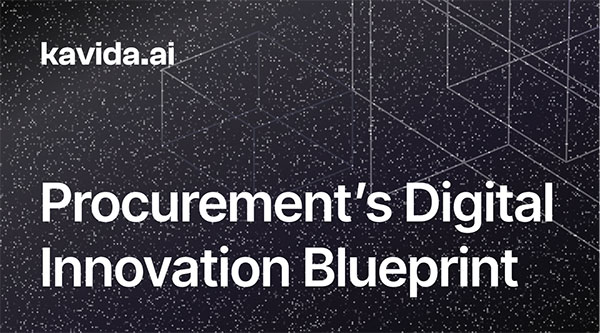
The Procurement Blueprint for Human-Centric Digital Innovation
Procurement leaders today need more than just efficient workflows—they need insights that drive smart decision-making. For decision makers...
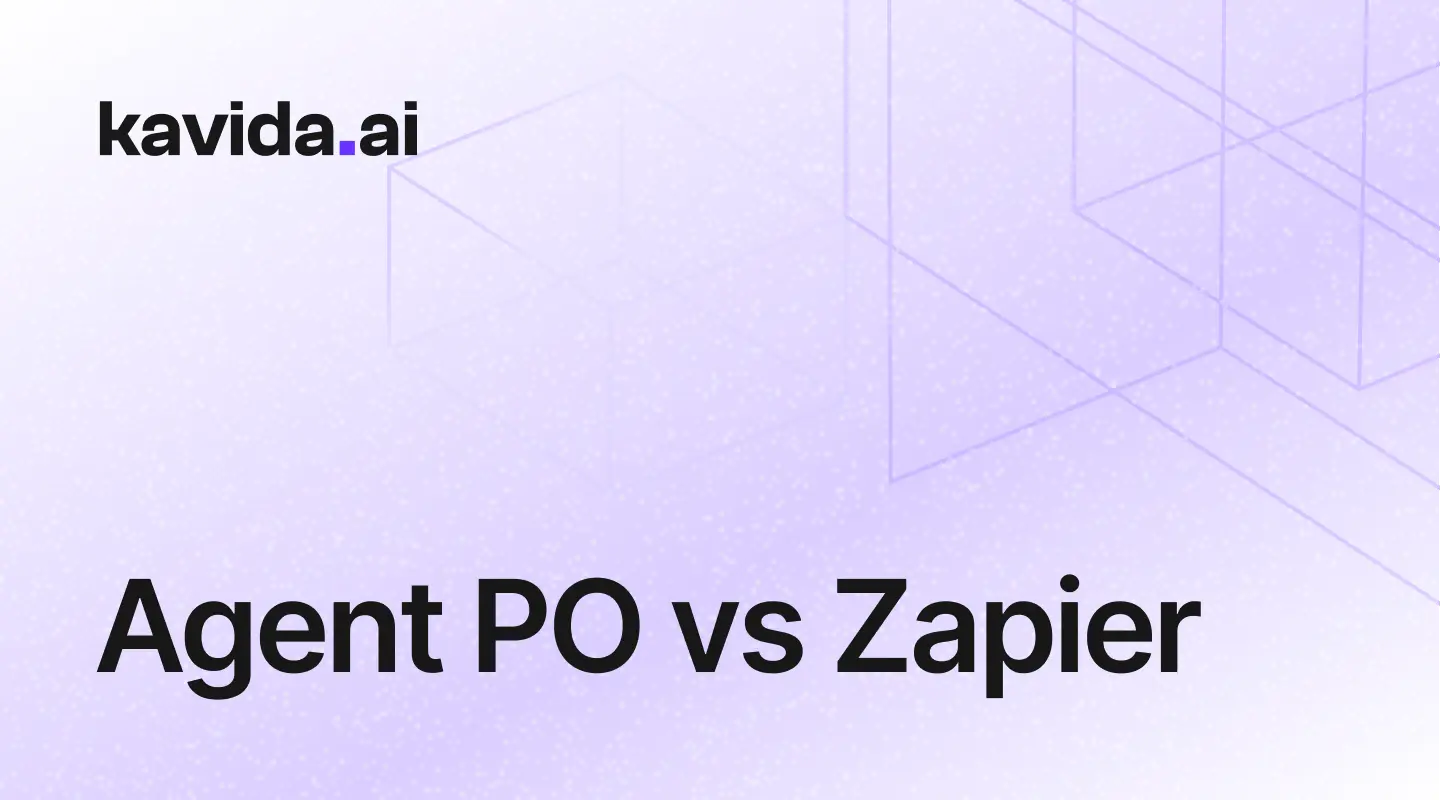
Why Procurement Needs More Than Automation: Choosing Agent PO Over Zapier
Procurement leaders today need more than just efficient workflows—they need insights that drive smart decision-making. For decision makers...
